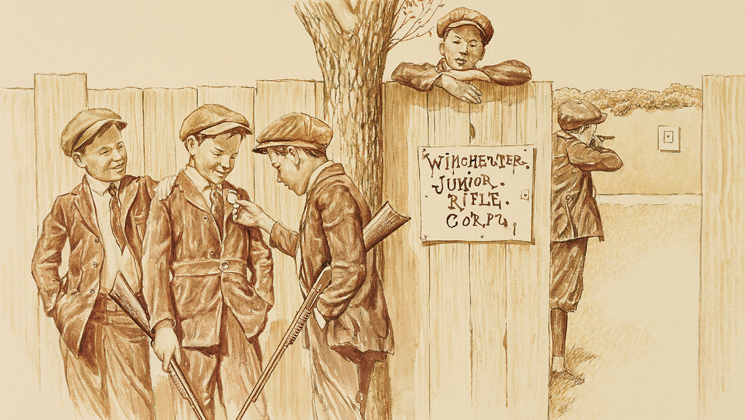
This article was first published in American Rifleman, July 2002. The origins of the Winchester Junior Rifle Corps can be traced in large part to two little books that were published in 1906 and 1907. The first of these, The Citizen Rifleman, was written by E. J. D. Newitt and published at the suggestion of the British Society of Miniature Rifle Clubs. In the clearest of terms, Newitt made the case that smallbore rifle training was a necessity if Britain was to maintain her Empire.
The origins of the Winchester Junior Rifle Corps can be traced in large part to two little books that were published in 1906 and 1907. The first of these, The Citizen Rifleman, was written by E. J. D. Newitt and published at the suggestion of the British Society of Miniature Rifle Clubs. In the clearest of terms, Newitt made the case that smallbore rifle training was a necessity if Britain was to maintain her Empire.
Although the second book could be more accurately described as a pamphlet, it was no less influential. Why Should Boys Be Taught To Shoot, written by Gen. George W. Wingate, one of the NRA’s founders and presidents, exploded the myth that the United States was a land completely filled with skilled marksmen. Drawing upon his experiences during the Spanish-American War, Wingate argued that target shooting should be actively encouraged as it reduced the amount of time needed to train recruits when they entered the service.
While neither work was a runaway best-seller, one reader was to put their proposals into action. Shortly after World War I began in Europe in 1914, Captain Albert F. Laudensack, one of the Winchester Repeating Arms Company’s designers, began lobbying his firm’s president, William G. Bennett, to establish some sort of program to promote target shooting among America’s youth. Eventually his efforts were taken up by the company’s sales department when it became clear that such a program could generate significant revenues. By that time, however, America had entered the war and its energies were directed elsewhere. In early 1918 the idea was floated again, this time to a more receptive, post-war audience, and the Winchester Junior Rifle Corps was officially organized in June of that year.

While the growth of the Corps was somewhat haphazard during the latter part of 1918, it expanded quickly in 1919. The Winchester company developed a variety of advertising campaigns to announce its existence and promote membership. In addition, brochures explaining the moral benefits of organized marksmanship training were distributed to schools nationwide. Though this might seem somewhat unusual given today’s standards, one must remember that in 1919 and 1920 the promotion of public morality was an extremely popular cause (witness the introduction of Prohibition).

From its very beginnings, the Winchester Junior Rifle Corps promoted another cause of the time: women’s rights. In its first circular describing the Corps, the firm announced its commitment to that process as follows: “The Winchester Junior Rifle Corps is an organization formed to encourage marksmanship among boys and girls not over 18 years of age, also to teach the safe handling of a rifle. It combines all the fun of shooting with the encouragement of high skill in marksmanship and good sportsmanship. It encourages the strong, normal boy and girl instinct for a rifle to find expression in a useful, character-building way.”
To emphasize that point, the very first member to be enrolled in the Junior Rifle Corps’ ranks was a young lady named Ruth L. Russell of New Haven, Conn. During the following decade, she was to be joined by thousands of other young women who competed against boys of their same age on an equal basis.
The Corps was also color-blind, much to the distress of some. Units formed by Black American churches in Florida, New England and New York City were treated equally with those organized elsewhere. Likewise, Native American units from Minnesota, Montana and Wisconsin also were welcomed into the fold. As Captain Laudensack is reported to have said, “It’s the competition that matters, the targets can’t see who’s shooting at them.”
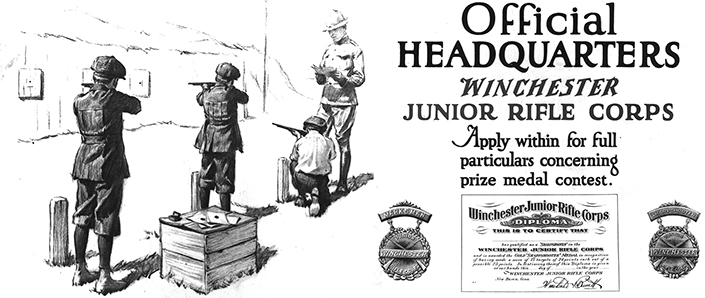
In 1920, the growth of the Junior Rifle Corps prompted the Winchester company to begin publication of a newspaper devoted to its goings-on. From January of that year until 1930, The Winchester Junior Rifle Corps News was distributed throughout the United States. It also was sent to units that had been organized in Australia, Canada, Great Britain, Rhodesia, South Africa and elsewhere. At its height, the Corps was truly an international organization with more than 100,000 active members.
Throughout its history, one of the prime aims of the Corps was to foster individual accomplishment. To achieve that, the Winchester company instituted a series of prize medals that could be won by members. Designed by the noted engraver Herman L. Ulrich, those medals all featured a pair of crossed rifles set against a sunburst that was enclosed within a laurel wreath. Above and below the rifles were cast the words “JUNIOR RIFLE CORPS,” while emblazoned across the center was a banner with the name “WINCHESTER” in lightning script.
The first award a member could win was called the “Marksman Medal.” It was presented to those who successfully “turned in ten certified targets with a score of at least 19 points in a possible 25.” The “Sharpshooter Medal” was awarded to those who sent in 15 targets scoring 24 or more points out of 25.
Those who submitted 100 certified targets having perfect scores were given the Corp’s highest award, the “Expert Rifleman Medal.” As an incentive to compete for that distinction, members were awarded special suspension stripes that indicated how many perfect targets they had shot. Certificates recognizing the awarding of those medals were also distributed by the Corps. Though medals were often misplaced over the years, these certificates are still occasionally found proudly displayed in former Corps members’ gunrooms.

While it could be argued that the Winchester company’s motives in establishing the Junior Rifle Corps were not perfectly altruistic, photographs published in its newspaper indicate that its members were not confined to using the firm’s rifles. Though many did use Winchesters (primarily Model 1885 and 1904 Single Shot Rifles), Savage, Stevens and Remington rifles also were popular. It should be noted, however, that the company did offer substantial price reductions on some of its models to Corps members. For example, in January of 1923 the remaining stocks of the Model 1885 Single Shot Rifle were transferred to the Corps for sale. Though the commercial price of that model was then $34.25, members could purchase one for $15. Interestingly, that price was $7.94 below the rifle’s January 1919 production cost.
Winchester also offered special “Range Kits” to Corps members containing either a Model 1902 or 1904 Single Shot Rifle. In addition to a rifle, those cases contained an assortment of items that shooters might need at the range (for example, targets, cleaning tools, oil, cartridges and belt pouches for notepads and pencils). They evidently were fairly popular as examples turn up in the arms market with some frequency.

For a brief period of time in 1918 and early 1919, thought was even given to developing a rifle specifically for the Corps. Work on that project (first unofficially known as the “WJRC Rifle” and then more formally as Experimental Design Number 109) was spearheaded by Frank F. Burton, who was later one of the guiding forces in developing the Winchester Model 54. Recognizing that its primary audience was youths, the rifle’s basic design closely resembled that of the Model 1904 Single Shot. Unlike that rifle, however, ED-109 was to be equipped with a detachable five-shot magazine. To allow its quick storage in a Range Kit case, the rifle had a novel take-down system. Rather than detaching the entire barrel and receiver from the stock, Burton devised a plan where the barrel was anchored to the receiver by interrupted lugs. In that way it could be dismounted simply by releasing a set screw in the fore-end and then turning the barrel a quarter turn.

Although a complete set of fully dimensioned engineering drawings for ED-109, as well as at least two prototypes, were prepared, the project was set aside in 1919 so that the Winchester company’s designers could direct all of their attention to another .22-cal. rifle project that was to have an even greater market. That rifle, which in many ways represents the Junior Rifle Corps most important legacy, was Experimental Design Number 111—later known to generations of marksmen as the Winchester Model 52.
In 1924, consideration was again given to manufacturing a rifle specifically for the Junior Rifle Corps. In that instance, a series of approximately six samples were built using Model 04 actions altered to accept Model 52 magazines. That development program, however, was abandoned when the Winchester Sales Department decided that such a rifle might adversely affect sales of the Model 52.
Though the Junior Rifle Corps was designed to promote marksmanship, former members recall the camaraderie of the units. One gentleman who grew up in Frederick, Md., told this author that some of his truest friends were boys he had met while in the Corps. He also said that some of his fondest memories of growing up involved the shooting parties that took place every weekend when he was in his early teens. That sentiment has been echoed by others who were members of the Corps. Like them, he also said that his lifelong interest in shooting had been encouraged by that membership. Thus, it can be said that the Winchester company did achieve the goals it set when the Corps was formed.
As might be expected, many of its members went on to compete as adults at various national and international matches. Whether at Bisley, Camp Perry or the Connaught Range, those graduates of the Corps always did well. The Winchester company was quick to capitalize on their successes, and throughout the 1920s their achievements were regularly reported in the firm’s advertisements. That was especially true if one of the individuals involved happened to use a Winchester rifle in winning a particular competition or in setting a record (such as that of Clifford Pool of Crestline, Ohio, who made 1,785 consecutive bullseyes at 50 yds. on December 30, 1925). Even after the Corps was disbanded, former members continued to be featured in advertising brochures and newsletters circulated by the company. As a result, images taken in the early 1930s of Carolyn Thierwechter and Phillis Sargent using Model 52 Rifles at Camp Perry appeared with the comments that both had been in the “W.J.R.C.”
While the Junior Rifle Corps remained a viable organization after the collapse of the New York Stock Exchange in October 1929, the Winchester company’s ailing finances soon spelled its demise. Ever increasing losses forced the firm in 1930 to abandon the program. Deprived of corporate support, its individual units and state chapters soon faded into history.
The concept of the Junior Rifle Corps, however, lived on. Many of its members were absorbed into the Civilian Marksmanship Program, including Sargent and Thierwechter, and others joined clubs established by the National Rifle Association. Thus, it can be said that the Junior Rifle Corps continues to this day, albeit under far different sponsorship and in a slightly different form.













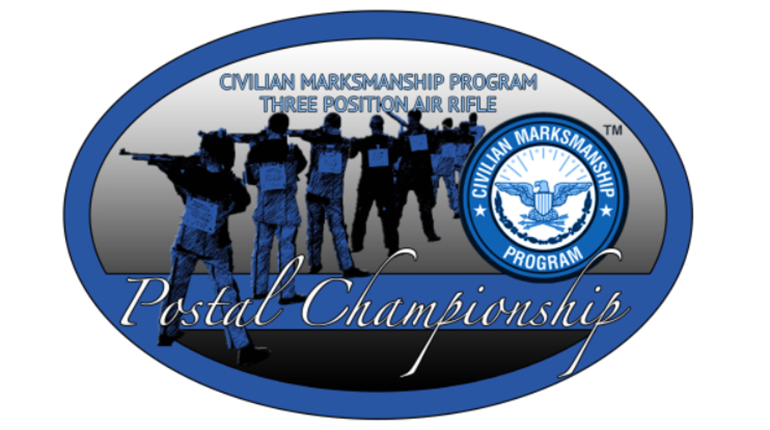
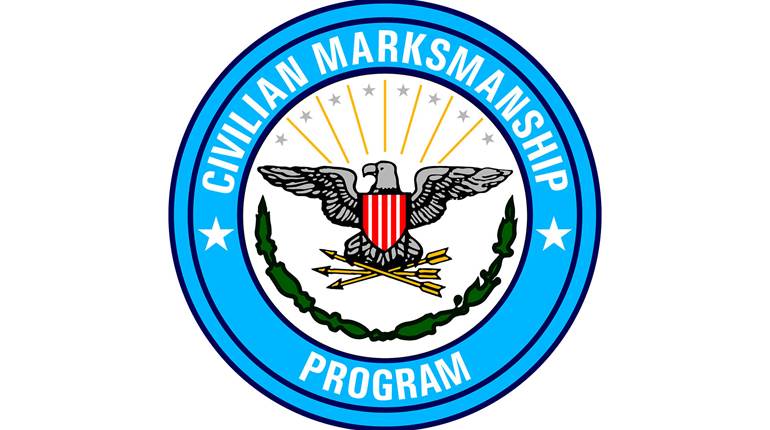
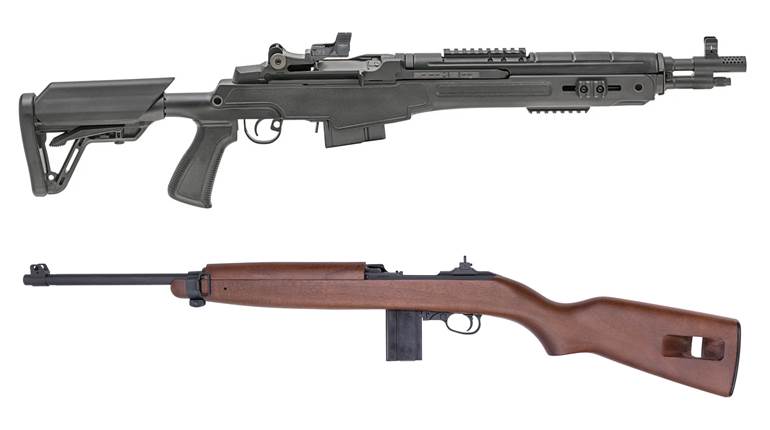
![Auto[47]](/media/121jogez/auto-47.jpg?anchor=center&mode=crop&width=770&height=430&rnd=134090788010670000&quality=60)




















